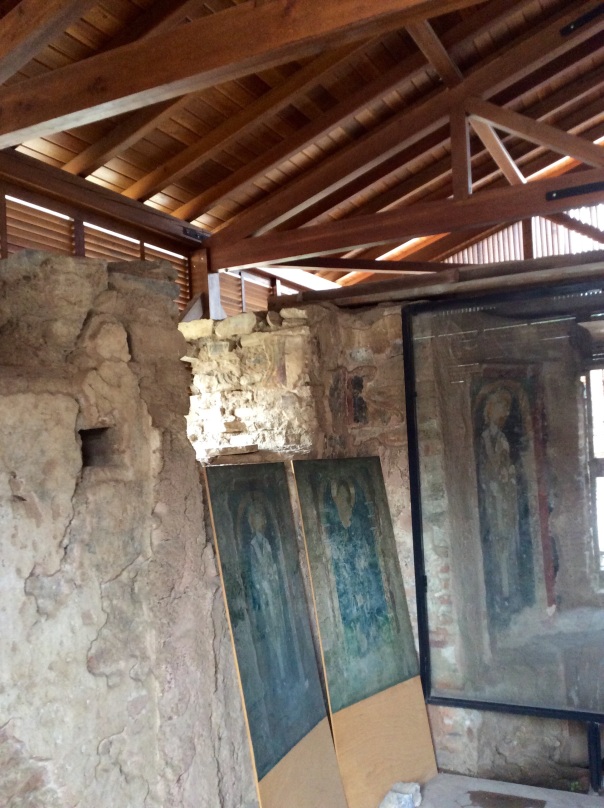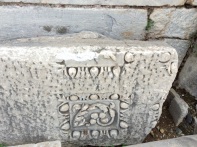12/8 – Today we saw the tomb of St. John, the one whom Jesus loved, the purported author of the Gospel of John and the Book of Revelation, the caretaker of Mary after the death of Jesus, and the last Apostle on our list!
If you recall, we have been seeking out the tombs of the 12 Apostles of Jesus, or at least some of their relics. We found:
Thomas – Chennai, India, 2008
James the Greater – Santiago de Campostela, Spain, 2011
Matthias (replaced Judas) – Rome, Maria Maggiore Church, Oct. 2014
Philip – Rome, Church of Holy Apostles, Oct. 2014
James the Just / Less – Rome, Church of Holy Apostles, Oct. 2014
Bartholomew – Rome, Church of San Bartolemeo, Tiberia, Oct. 2014
Paul and Peter’s Skulls – Rome, St. John Lateran Church, Oct. 2014
Peter – Vatican, St. Peter’s Basilica, Oct. 2014
Jude (Thaddeus) – Vatican, St. Peter’s Basilica, Oct. 2014
Simon the Zealot – Vatican, St. Peter’s Basilica, Oct. 2014
Matthew, Apostle and Evangelist – Salerno, Italy, Salerno Cathedral,Oct. 2014
Andrew – Amalfi, Italy, Basilica of the Crucifix, Nov. 2014
Mark the Evangelist – Venice, Italy, Basilica San Marco, Nov. 2014
John, Apostle and Evangelist – Selçuk, Turkey, Church of St. John, Dec. 2014
If you’re counting, that is more than 12, as some consider Paul to be Judas’s replacement instead of Matthias, and we included Mark the Evangelist as we also had Matthew and John. Luke the Evangelist wasn’t on our original list – with his remains divided between Prague, Padua and Thebes, we’ll have to catch up with him on another trip…
So today we walked across the street from our pension to the Ruins of the Church of St. John.
John was buried in a cave. The four pillars show the place of the tomb in the original church that was built over the cave.
The locked grate covers the tunnel dug to exhume the body of John during the reign of Justinian in the 500s, purportedly to distribute his relics. No bones were found, only dust. John is the only Apostle who does not have relics scattered around Christendom. The dust, also called manna, was gathered for many years, and was said to cause miracles.
Jim made friends with St. John’s cat.
The baptistery had three steps down on either side to allow for total immersion. We watched several tour guides explain this at length to tourists unfamiliar with the concept.
At the entrance to the baptistery, part of the original mosaic floor was visible.

Three original frescoes, of Jesus, Mary, and an unidentified holy person are being restored in the Treasury, which also has its original floor. The frescoes are behind glass, so please excuse my reflection.

St. John’s Church was built here twice, with Justinian’s huge construction in the 500s the biggest church of its time. It covers the entire hillside. 
Here is a model of what it once looked like:
When destroyed by an earthquake in the 1400s, the church was not rebuilt. Archeological reconstruction began in the 1920s and is still going on today. So many pieces to put back together!


























Karen,
It must be very moving to see the beauty of the land firsthand and visit such sites so rich history! I just love your commentary and photos! Thanks for sharing your travels with us sedentary folk. 🙂 Ruth
LikeLike
Thank you, Ruth. This journey is like a dream – sometimes I can’t believe I’m really here. So glad you’re along for the ride! Love to all at home.
LikeLike